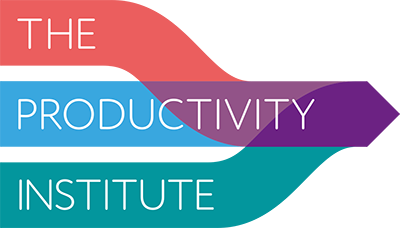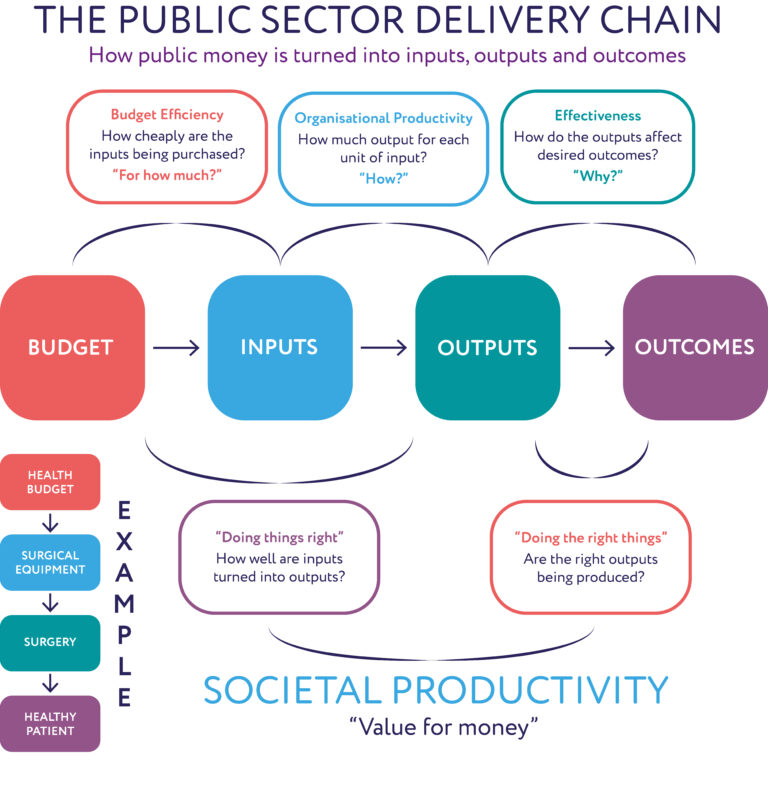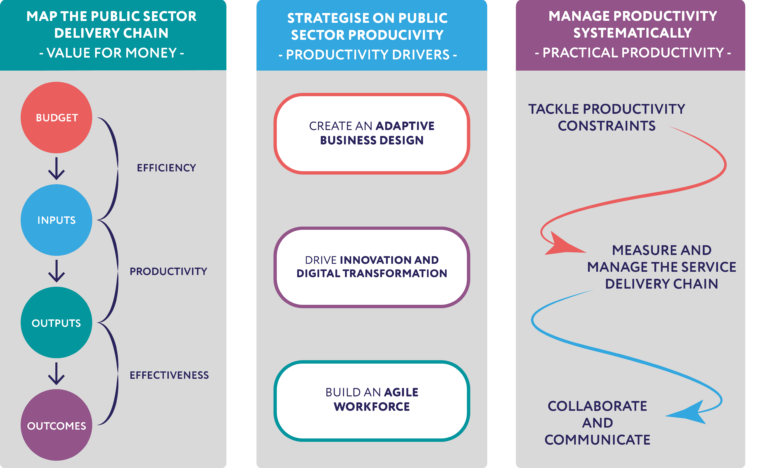Making Public Sector Productivity Practical – report overview
This is an early look at what can be found in Professor Bart van Ark’s report Making Public Sector Productivity Practical, which has been produced jointly between The Productivity Institute and Capita. You can pre-register to access the upcoming report on Capita’s website.
Executive Summary
Raising public sector productivity helps to improve the conditions for economy-wide productivity growth and has the potential to improve the working lives of public sector employees. This report aims to connect our knowledge about concepts, measurement, drivers and barriers to productivity growth in the public sector with practical insights into improving productivity.
Public sector productivity: measures and opportunities
- Public sector productivity increased by an average of 0.7 percent per year from 2010 to 2019, which represents a marked improvement over the preceding decade, while being faster than its private sector counterpart.
- The recent gains in public sector productivity are partly due to measured improvements in the quality of public services delivered. Between 2010 and 2019, 0.2 percentage points of the 0.7 percent annual productivity growth was due to quality improvements.
- Tighter spending controls have largely contributed to improvements in productivity.
- A recent report by the Health Foundation[i] claims that cost savings to generate productivity gains are not sustainable. A report by the Chartered Institute of Public Finance and Accounting and the Institute for Government[ii] argues that limiting staff pay increases and prompting workers to be more productive is “approaching – or has already reached – its limit.”
- Raising productivity by increasing the numerator of the equation (output quantity and quality) rather that reducing the denominator (limiting inputs) can help enormously in meeting these challenges. For example, doubling annual productivity growth from 0.5 percent to 1 percent per year through greater output and quality would deliver about £1.8 billion in additional GDP every year.
- The provision of skills, innovation, and infrastructure will raise productivity and ultimately contribute to the wellbeing of people, both within the public sector workforce and in the wider economy.
Mapping the public sector delivery chain
- To a large extent, misunderstandings and misconceptions of public sector productivity are due to a failure in adequately mapping the service delivery chain to identify the key bottlenecks for improvements.
- Private sector firms aim for revenue or profit growth without being too constrained by societal objectives. In contrast, public services need to deliver affordable, comprehensive, inclusive and high-quality services, often with an element of urgency and a recognition of rights.
- Public sector objectives are primarily determined through a democratic decision-making process, based on legal requirements or derived from broader policies set by umbrella organisations, such as government departments or local councils.
The key drivers of public sector productivity
Organisation: Adaptive business design
- Public sector organisations need to become more flexible in responding to changes. Internal challenges, such as budget changes and shortages in staff or skills, and external issues, ranging from policy changes to altering citizen preferences, all have an impact.
- Public sector organisations should strive for a better balance between hard budget constraints and spending flexibility.
- Balancing between scaling up the delivery of public services while tailoring to specific customer segments is also essential.
- Responding to contextual needs, especially regional or local requirements, is important for realising productivity gains in the public sector.
Technology: Digital transformation
- Building capabilities to innovate and to experiment depend on how much space is given to strategic thinking in the organisation.
- Digital transformation is critical in driving continuous innovation in public sector organisations. These technologies can simplify, streamline and enhance the delivery of products and services.
- It also leverages the new technologies and, importantly, the data they generate to connect organisations, physical assets, processes and people.
- Public sector organisations need to monitor new digital initiatives continuously, especially making use of algorithms.
People: An agile workforce
- Workforce skills: while digital technologies require STEM skills, softer skills are key to the creation of an agile workforce that can understand customer needs.
- While an agile workforce tends to generate greater employee satisfaction and higher morale, it needs to be preceded by strong consultative processes and ownership of new working arrangements by those most involved in the delivery.
- Manager skills: an increase in managerial talent can raise office productivity substantially, as shown in a recent study[iii] for public administration offices in Italy. Strikingly, this was primarily driven by the exit of older managers who retire. This suggests that new technologies and innovations may be more easily adopted by better skilled younger workers.
Putting productivity into practice
Identify and solve constraints
- Avoid trying to improve everything at once. Focus on the greatest bottleneck in the flow of resources from inputs, outputs to outcomes, provide the resources for solutions and de-prioritise other pressure points.
- Public sector delivery chains are complex. By applying the constraints methods, managers can create the analysis space to understand the root of the problems across the organisation, without becoming overwhelmed by the symptoms.
- Focus on outcomes. Start from the end product, identify the outputs and the inputs for delivery – align these needs with any budget constraints.
Measure and manage performance
- Not everything that matters can be measured, and not everything we can measure matters. Data can be useful to assess if the output and productivity improvements are realised, but some may be more or less relevant for improving outcomes.
- There is a lot of untapped potential for improving the use of measurements to support managers in evaluating processes and allocating resources.
- The more important usage of metrics may be to improve organisational performance. Frontline workers often have the most knowledge about the service delivery process.
Collaborate and communicate
- The translation of continuous innovation into higher productivity depends strongly on internal processes. It is essential to create an engaged workforce that frequently communicates with management.
- External collaboration can create a community in which public and private sector executives learn from each other about productivity barriers and improvements.
- Public sector organisations can be viewed as part of a social infrastructure producing collective services to safeguard the health and wellbeing of communities. This approach makes organisations more resilient against shocks and crises impacting the system.
- Communication is a critical part of practical productivity. Public sector organisations should honestly, transparently and consistently communicate performance measures internally and, where needed, externally.
Future Focus
While there are no silver bullet solutions for raising public sector productivity and the struggle for more resources is eternal, a systematic approach can support organisations in pivoting and making productivity more practical. Overall, there is still scope for expanding the research agenda in several directions to gain a deeper understanding of how productivity works and how it can be implemented:
- A significant need still exists for better methods for measuring the output, quality, and productivity of the public sector, particularly in government.
- It is important to focus the research on the effectiveness of public sector management. To complement traditional organisational management approaches, the research might also benefit from literature in the political sciences, public sector economics, and intangible investment theories and insights from multi-product firm models.
- There is also a need for more evidence that productivity has improved in individual public sector organisations. Case studies should be conducted for specific government entities or policy domains, such as social care or housing.
You can pre-register to access the upcoming report on Capita’s website.
[i]Tim Horton, Anita Mehay, Will Warburton, Agility: the missing ingredient for NHS productivity, The Health Foundation, 2021.
[ii]The Chartered Institute of Public Finance & Accounting (CIPFA) and the Institute for Government (IoG), Performance Tracker 2019. A data-driven analysis of the performance of public services, 2019
[iii] Alessandra Fenizia (2022), Managers and Productivity in the Public Sector, Econometrica, Vol. 90, No. 3, pp. 1063-1084.





